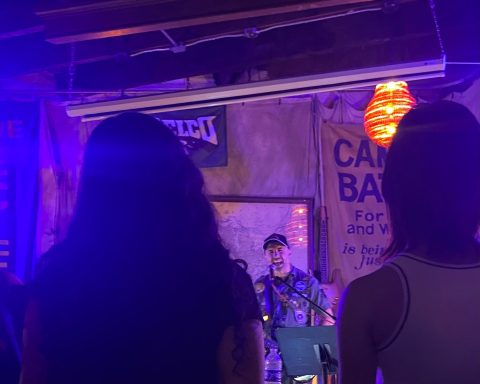Swat Ed is the Phoenix’s biweekly sex education Q & A. We accept all questions and they are kept completely anonymous. If you’re looking for medical advice or a diagnosis for that weird thing on your genitals, get in touch with a medical professional! For everything else, email swatedquestions@gmail.com. Today’s subject matter includes food porn, pain during sex, and female-bodied anatomy.
My friend introduced me to these food porn videos where people eat and you can hear their eating noises. Since it’s called food porn, I was wondering if people actually get off to this stuff?
In general, the answer to the question “is there someone who gets off to this?” is yes. I understand that most of the appeal of food porn videos is in the ASMR effects of the sounds made by eating. However, there is probably a small subset of people who find it sexually appealing.
Why does losing your virginity hurt?
This is a really good question. Firstly, by “losing virginity” you’re probably referring to the first incidence of penis in vagina sex. Although this is the commonly accepted (albeit heteronormative) colloquial meaning, it’s worth noting that virginity has different meanings for different people. Primarily, there are a lot of people who have active sex lives that don’t include PIV. But some people also prefer to define virginity loss based on enjoyment, not necessarily completing a specific physical act. In that case, you might define losing your virginity as the first time you both orgasm from sex, or the first time you have a mutually pleasurable experience.
On to the question of pain during first PIV. Popular culture emphasizes that this is a perpetually painful experience. I’ll start with the “popping cherry” myth. The “cherry” refers to the hymen, which is a piece of tissue that surrounds and sometimes partially or completely covers the vaginal opening. The tearing or stretching of the hymen upon insertion can cause pain and bleeding. There is still a myth that an intact hymen is a sure sign of virginity; this is not the case. Hymens can be stretched or torn through physical activity like horseback riding and gymnastics or by using tampons or masturbating.
So hymens tearing can be painful (for some people more than others). The other, potentially more problematic source of pain from first PIV is tenseness in the vaginal muscles. Dryness exacerbates this, so using lube can take away that stressor. Pain from a hymen tearing is typically brief; tenseness can hurt for much longer. The way to combat this is to make sure the partner with the vagina is relaxed and turned on; this is one of the many reasons foreplay is so important. Discomfort from tearing or stretching the hymen can be unavoidable, but no one should ever feel intense discomfort because they’re not relaxed or turned on enough. It’s preventable. Some things that can help: having an orgasm before penetration, having sex in a position that allows the receiving partner to relax their muscles completely, and especially extensive foreplay/cunnilingus. Finally, a note about lube: it’s something many people benefit from, but it isn’t a substitute for foreplay that means you can go straight to penetration no problem. Relaxation and genuine physical pleasure are necessary.
What’s the optimal amount of time for sex to last?
This is something that tends to be an unnecessary source of stress for men; there’s a definite media-enforced idea that lasting for hours is the only way to be a good lover. An important thing to remember: men frequently finish quickly when they haven’t had sex in a while, with a new partner, or out of nervousness. It can be a source of insecurity, so commenting on it is unnecessary.
The reason that finishing quickly is equivocated to female dissatisfaction with sex is basically that many heterosexual interactions treat penetration as the ultimate act of satisfaction for both partners. The majority of women are unable to orgasm from solely penetration; this means that they should orgasm during foreplay. For most women, if they already feel satisfied from foreplay, the duration of intercourse doesn’t matter in the slightest. However, if there has been minimal, unfulfilling foreplay and short intercourse, women come away from the interaction unsatisfied. The moral of the story is that there is no optimal amount of time for sex to last — if both partners feel satisfied, you’re good. For some people, that’s three minutes; for others, it’s 40.
What is the G spot, where is it and is it really such an enjoyable thing for women?
The oft-mysticized G-spot is actually part of the clitoris accessible through the vagina. The clitoris is not limited to the small external part at the top of the vulva; it is a large internal structure that surrounds the vagina and the G-spot is easily accessible just inside the vagina, on the side closest to the woman’s belly button. It has a different texture than the rest of the vaginal walls — it feels rougher. Some people with vaginas really enjoy G-spot stimulation and others do not; if your partner is really into it it can be very enjoyable for them. As with all forms of intimacy, communicate with your partner about what feels best for them and work off of that.












